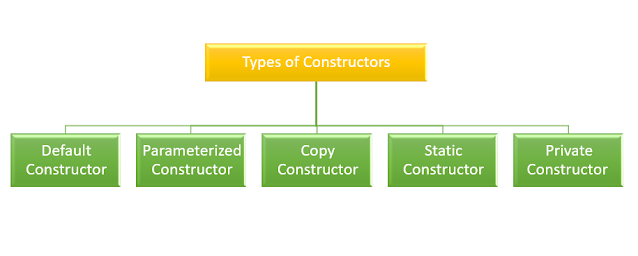Constructors can be categorized into three types based on their parameters and purpose:
Default Constructor:- A default constructor is a constructor that takes no parameters.
- It is automatically provided by the compiler if no constructor is explicitly defined in the class.
- The default constructor initializes the object's instance variables with default values depending on their types.
- It allows you to create objects without requiring any specific initialization parameters.
- Example:
public MyClass() { /* Default constructor code */ }
Parameterized Constructor:
- A parameterized constructor is a constructor that takes one or more parameters.
- It allows you to initialize the instance variables of a class with specific values provided at the time of object creation.
- The parameters in the constructor declaration define the values that need to be passed when creating an object.
- It provides flexibility in object initialization by allowing different sets of values to be passed to create objects with different initial states.
- Example:
public MyClass(int value) { /* Parameterized constructor code */ }
Copy Constructor:
- A copy constructor is a constructor that creates a new object by copying the values from an existing object of the same type.
- It is used to create a deep copy of an object, ensuring that the new object has its own separate copy of the data.
- Copy constructors are often used when you want to create a new object with the same values as an existing object without referencing the same memory locations.
- It helps prevent unintended changes to shared data or create independent copies for manipulation or comparison purposes.
- Example:
public MyClass(MyClass other) { /* Copy constructor code */ }
By using these different types of constructors, you can control the initialization process of objects and create instances with different initial states, based on the specific requirements of your application.

